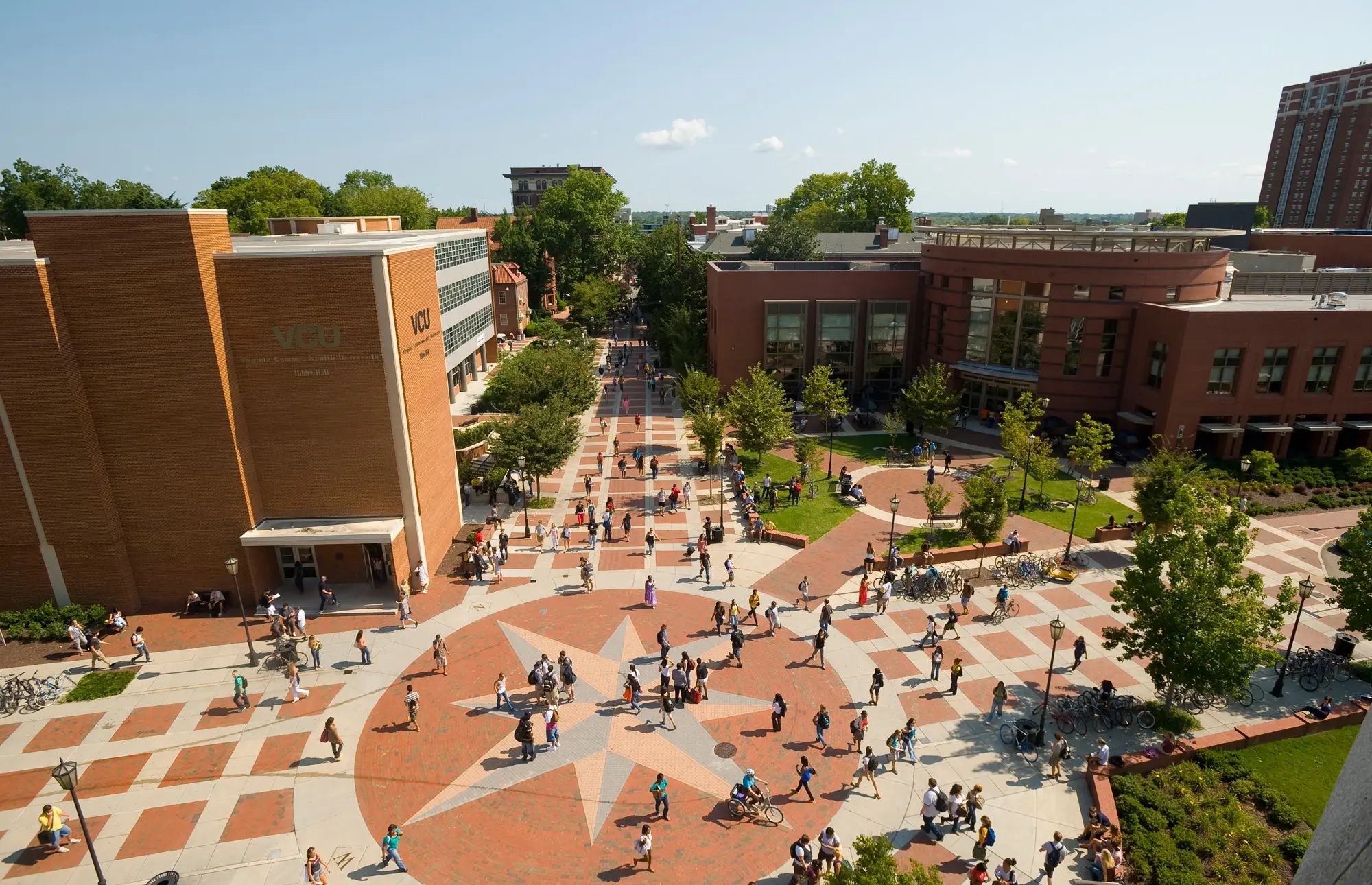Long before the colonization of this territory, Native Americans were stewards of the land. To emphasize this truth, Virginia Commonwealth University and the VCU Health System have adopted a new land acknowledgment that highlights the centrality of Indigenous peoples, their contributions and their ongoing presence on the land that VCU calls home.
The custom of making land acknowledgments has been used in Native communities for centuries, according to the National Museum of the American Indian. The practice of recognizing Indigenous peoples and their stewardship is newer among non-Native communities.
“VCU’s land acknowledgment statement is an important recognition of the inclusive values our institution brings not only to the history of the land beneath the university’s present-day campus locations but also to the many important Indigenous communities with which we seek to work and collaborate today and tomorrow,” said Fotis Sotiropoulos, Ph.D., provost and senior vice president for academic affairs. “I’m grateful for the intentional and thorough work that was done by the task force charged with creating this acknowledgment.”
Sotiropoulos expressed his support for the statement after the Land Acknowledgment Working Group from VCU’s Humanities Research Center presented its findings in 2021 to the Faculty Senate, asking the university to take action.
He convened a series of meetings that led to the creation of the One VCU Land Acknowledgment Task Force in September 2022. Exactly two years later, VCU’s land acknowledgment was approved by the Cabinet and the Board of Visitors.
The task force was asked to identify ways to build meaningful relationships with all 11 state-recognized tribal nations. Seven are federally recognized: the Chickahominy, Chickahominy-Eastern Division, Monacan, Nansemond, Pamunkey, Rappahannock and Upper Mattaponi. Four others are state-recognized nations: Cheroenhaka (Nottoway), Mattaponi, Nottoway and Patawomeck. Historically, area tribal lands are associated with the Powhatan Chiefdom and the Monacan Nation.
“We also wanted to recognize the contributions of the tribal nations,” said Joanne Harris, manager of the VCU Health Office of Inclusive Excellence.
Embracing voices and perspectives
The task force received feedback from a variety of sources that included tribal leaders, other Indigenous peoples and VCU staff.
“We read over recommendations from the VCU Board of Visitors and tribal members on how to word the land acknowledgment to make sure there is proper representation,” said Christina Davis, a Ph.D. student in VCU’s School of Education and instructor in Interdisciplinary Studies program. “We want to incorporate Indigenous policy, literature, history and culture into the current curriculum.”
Suggestions made by the task force, if enacted, will position VCU well among peer institutions, according to Cristina Stanciu, Ph.D., director of the Humanities Research Center and a professor in the Department of English.
“A land acknowledgment without meaningful action by the university doesn’t mean much,” she said, adding that similar public institutions already have established land acknowledgements and relationships with tribal nations. “VCU has some catching up to do, especially in the areas of recruitment of Indigenous students and faculty, and building a curriculum that Indigenous students will find welcoming.”
The university has built relationships with several tribal nations through initiatives and collaborations in medical and STEM areas.
“The next step is investing in the humanities and the education of students, staff and faculty at VCU on Indigenous topics,” Stanciu said. “It is important that the teachers we train at VCU know local Indigenous histories, are conversant in national and global Indigenous issues and can prepare the next generation of Virginia citizens.”
The recommendations made by the task force are currently being reviewed by Faye Belgrave, Ph.D., vice president and chief diversity officer for VCU, and Marcelle Davis, DSL, vice president and chief diversity officer for VCU Health.
Learning more about Virginia’s native community
To further their commitment to the tribal nations, VCU and VCU Health representatives attended on Sept. 19 the Sovereign Nations of Virginia Conference, whose theme was “Pathways to Partnership: Enhancing Trust through Tribal Consultation.”
“Every year, the seven federally recognized tribal nations come together and offer a conference on how the community can come together to ensure it is preserving the culture and land of Indigenous nations,” Harris said. “We learn about education, health care, research and community engagement.”
Earlier this year, in mid-March, the State Council of Higher Education for Virginia and VCU Health hosted the Virginia Indigenous Nations in Higher Education Leadership Summit.
“It was an honor for us to be able to host all tribal chiefs and leaders of tribal nations,” Harris said, noting that the summit’s theme was to build collaboration among colleges, health systems and Virginia’s Native American tribes. “We always want to make sure we are open and inclusive of the needs of the Indigenous community and its allies.”
Creating awareness and building a future
Davis, whose Indigenous family roots touch on numerous tribes, said VCU’s new land acknowledgment helps students, staff and faculty know that “Native Americans are still here,” referring to how the communities have been marginalized for years.
“We want to acknowledge that the seven federally recognized tribes are sovereign nations, and we have to make sure we are keeping them in the loop in regard to research,” she said. “We want to make sure we include them in any decisions we make that will affect their lands and their community.”
Davis added that Native students will be members of the re-emerged Native American Student Association at VCU in spring 2025, and they currently represent the Mohawk, Seneca, Navajo, Shinnecock, Seminole, Chickahominy, Pamunkey, Rappahannock and Upper Mattaponi tribes.
For Stanciu, the new land acknowledgment can create opportunities for research and mutual learning, both on campus and on Native reservations.
“VCU can and should learn from tribal citizens,” she said. “This acknowledgment is also an invitation to solidify that collaboration and to build together for a future that benefits many generations coming after us.”
